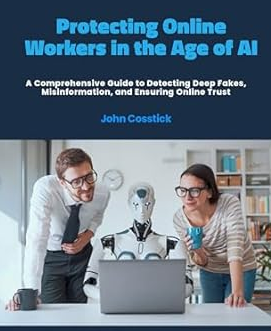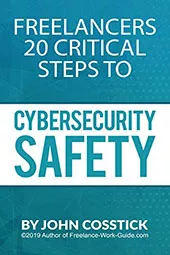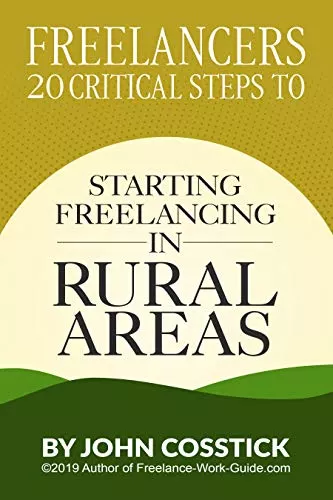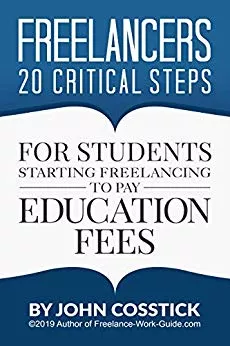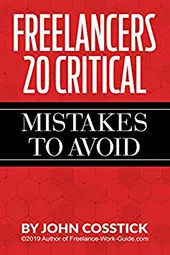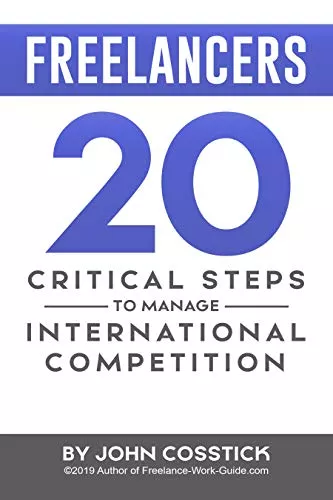Guest Post: Alex J. Coyne | July 2024
Introduction
Artificial Intelligence (AI) has revolutionized many aspects of our lives, from entertainment to cybersecurity. However, with these advancements come significant risks. AI-generated content, such as those produced by DALL-E and other tools, has sparked debates about copyright infringement and the protection of digital identities. This article explores the threats posed by aig cloning (AI generated) and offers strategies to safeguard your digital identity.

Section 1: Understanding AIG Cloning
Definition of AIG Cloning
AIG cloning refers to the use of Artificial Intelligence (AI) to create digital replicas of images, voices, and videos. These replicas can range from harmless entertainment, such as recreating the voices of deceased musicians, to serious cybersecurity threats, like deepfake videos used for misinformation or identity theft.
The abbreviation AIG has evolved over time, initially standing for Artificial Intelligence Generated, then shortened to AI Generated, and further to AI Gen, finally becoming AIG. This evolution in terminology reflects the growing prevalence and recognition of the technology. As AIG cloning becomes more widespread, it is anticipated that domain names will also adapt, potentially including names like aigfakes.com or aigclones, to represent websites focused on this emerging field to warn the public to exercise care.
How AIG Cloning Works: Technical Overview
The technology behind AIG cloning involves feeding large datasets of copyrighted material into AI systems, which then produce new content that mimics the originals. While this can result in creative outputs, it also raises significant copyright and ethical concerns.
Examples of AIG Clones
AI has been used to create convincing deepfakes and voice clones. For example, the technology has recreated the voices of deceased musicians and produced realistic video footage of people doing or saying things they never did.
The same technology which drives AI-generated content like songs and memes can also be used to feed vast amounts of copyrighted content like music and art into a digital recycling machine—where the end-products are cheap and fast but also infringe on someone’s original copyright with no copyrightable powers of its own.
Generative AI can also be used for more nefarious purposes, including the ability to clone a person’s likeness or voice. The technology has been used to create “deepfakes” and computerized clones, but the same basic tech can also be used to impersonate friends or family members for ransom demands—and it has.
The Global Investigative Journalism Network (GIJN) encourages journalists and writers to examine recordings by referencing, cross-checking, and using reliable cloning-detection tools.
Section 2: The Dangers of AIG Cloning
Cybersecurity Risks Associated with AIG Cloning
- Identity Theft: AI clones can be used to impersonate individuals, leading to identity theft.
- Fraudulent Activities: Scammers can use AI-generated voices or videos to commit fraud, such as virtual kidnapping schemes.
- Misinformation and Disinformation: AI can create convincing fake news, leading to widespread misinformation.
One moment you could conceivably be using artificial intelligence as a tool to find out what Elvis Presley might have sounded like alongside Taylor Swift, and the next moment you might find yourself absorbed in the horror of what technologies like this could mean for cybersecurity and identity.
Case Studies of AIG Cloning Incidents
In one notable incident, an AI-generated voice clone was used to convince a mother that her daughter had been kidnapped, demanding a ransom. Such cases highlight the severe implications of this technology. The Federal Bureau of Investigation (FBI) calls the crime virtual kidnapping, described as “an extortion fraud tool” that’s believed to be on the increase.
Artists are also learning to protect their work against being used to train generative tools. Software called Nightshade, for example, acts as “AI poison” that corrupts the results of any AI-generated image it gets fed into.
Section 3: How to Detect AIG Clones
Tools and Techniques for Detecting Cloned Content
- Logic and Context: Assessing the logical consistency of images and videos can sometimes reveal AI-generated content.
- Anomalies: Look for anomalies in details such as symmetry, lighting, and proportions.
- Source Verification: Use reverse image searches and other tools to trace the origin of suspicious content.
- Professional AI Detectors: Tools like WasitAI and AIorNot can help identify AI-generated content, although they are not foolproof.
Detecting AI-generated clones can sometimes be as easy as stepping out of context for what you’re seeing. However, that’s not always the case, and an observer or source might need to employ several techniques to spot what’s AI—and what’s original.
- Logic: An image of Jimi Hendrix standing next to Miley Cyrus couldn’t be real because it crosses over the logical boundary of what you might know—however, spotting artificial intelligence isn’t always that simple.
- Anomaly: Anomalies can sometimes detect an AI image or video with plain sight says PCMag. Artificial intelligence can create the broader picture but might slip on basic details like symmetry, logic, or something as simple as earrings or hands.
- Source: Seeking the source can also get to the root of where an image or video came from and whether it might have been created with artificial intelligence. Reverse search the suspected image to find any prior references or other mentions.
- Professional AI Detectors: The Global Investigative Journalism Network (GIJN) advises the use of professional detectors to spot potential deepfakes. Detectors like WasitAI or AIorNot can sometimes successfully identify AIG images and content—though the same detectors might also render false positives like claiming that Shakespeare’s works have been primarily written by AI.
As a rule of thumb, use several detectors in checking the same content for the most accurate results. If no references or citations exist for an image, let it be the first sign that sets off your senses for further investigation into its potential truthfulness.
Section 4: Protecting Yourself from AIG Cloning
Best Practices for Cybersecurity
- Strong Passwords and Two-Factor Authentication: Use complex passwords and enable two-factor authentication to protect your accounts.
- Regular Software Updates and Patches: Keep your software up-to-date to protect against vulnerabilities.
- Vigilance in Verifying Content: Always verify the authenticity of digital content, especially unsolicited messages.
- Privacy Measures: Set social media profiles to private and be cautious about sharing personal information online.
Commercial AI usage has prompted public figures to pursue lawsuits against the use of their likenesses for generative purposes.
Resources and Tools
- Password Managers: Tools like those recommended by Forbes can help manage and secure your passwords.
- Legal Recourse: Artists and individuals can issue cease-and-desist letters or takedown requests if their likeness is used without permission.
Hollywood screenwriters launched a mass strike during 2023 protesting against the use of generative AI in the creative workplace.
It’s entirely possible, for example, to create an AI-generated clone of a deceased loved one. This has prompted people to add anti-AI clauses into their wills prohibiting any potential recreation of their likeness (whether voice, image, or video) after death.
Protection against AI is also about stronger cybersecurity measures.
Privacy and Security
Most usable information scammers can gather comes from data that’s already public on social media, according to the BBC. Stronger security measures can protect most of your basic information. For example, set social media information (especially photographs) to private settings rather than public.
Protective measures are important for almost all online data these days. Google and its associated services can use uploaded content for AI-training—unless its users opt out of the service.
Passwords and Two-Factor Authentication
Scammers can do a lot of damage by gaining direct access to any of your accounts and simply ripping most of the information from the outside. The Cybersecurity and Infrastructure Security Agency (CISA) advises strong passwords using at least 16-characters, preferably random ones using “mixed-case letters, numbers, and symbols.”
Two-factor authentication can also prevent or deter fraudulent login attempts, usually by associating a secondary PIN-code or device with the account.
Regular Software Updates and Patches
Software updates and patches (or software fixes) are a crucial part of cybersecurity and identity protection, according to Privacy International. The same information is emphasized by Norton and Computerworld because software updates and patches protect against any flaws, vulnerabilities, or exploits in software (and especially operating systems or firmware).
Vigilance in Verifying
Verify all content that you encounter online, whether you’re looking at news headlines or personal inbox messages from someone you already know.
Using a safeword or keyword with friends and family could reduce potential cloning scams, according to an Osbournes podcast.
Using AI detection tools like WasitAI or AIorNot can screen for signs of generative content over real-life images. While not all AI detection tools are flawless, they are improving—just like generative AI itself.
Resources and Tools
According to How-To Geek and Forbes, password managers can be a more effective tool to safely manage passwords in one place. Two-factor authentication is one more way to secure accounts against third-party access and might make users less likely to become the victim of scams.
Users also want to search their own content (such as images) to ensure that there aren’t any unauthorized copies circulating around out there.
Artists who find their works (or likenesses) reproduced online have legal recourse, such as cease-and-desist letters and/or takedown requests.
Section 5: The Future of AIG and Cybersecurity
Predictions for the Evolution of AIG Cloning
As AI technology continues to evolve, so will the methods for creating and detecting clones. It is crucial to stay informed about these developments.
Evolving Cybersecurity Practices
Cybersecurity measures will need to adapt to new AI threats. This includes both technological solutions and legislative actions.
The Role of Legislation and Regulation
Governments and regulatory bodies are beginning to address the challenges posed by AI cloning. For instance, some U.S. courts have banned the use of generative AI in legal proceedings, and copyright laws are being updated to reflect these new technologies.
According to Thomson Reuters, several United States courts have banned the usage of generative AI within legal proceedings. Another landmark ruling covered in Harvard Business Review states that the results of generative AI aren’t subject to copyright by law.
Conclusion
Generative AI cloning can affect any consumer with their information on a central system, and it’s not just something that you could imagine is just affecting celebrities, companies, or influencers. Awareness and education are key to crime prevention, says Secure Fortified.
Deepfake cloning could be used to impersonate a trusted friend, family member, colleague, or even you: however, generative AI cloning collapses under serious scrutiny and better security measures—and like chess, effective cybersecurity is all about staying three steps ahead.
Are you prepared enough?
References
- Federal Bureau of Investigation: Virtual Kidnapping
- Forbes: Deepfake Fraud
- MIT Technology Review: AI Regulation
About the Author: Alex J. Coyne is an author, journalist, and proofreader. He has written for a variety of publications and websites, with a radar calibrated for gothic, gonzo, and the weird. His features, posts, articles, and interviews have been published in People Magazine, ATKV Taalgenoot, LitNet, The Citizen, Funds for Writers, and The South African, among other publications. Sometimes he co-writes with others.



